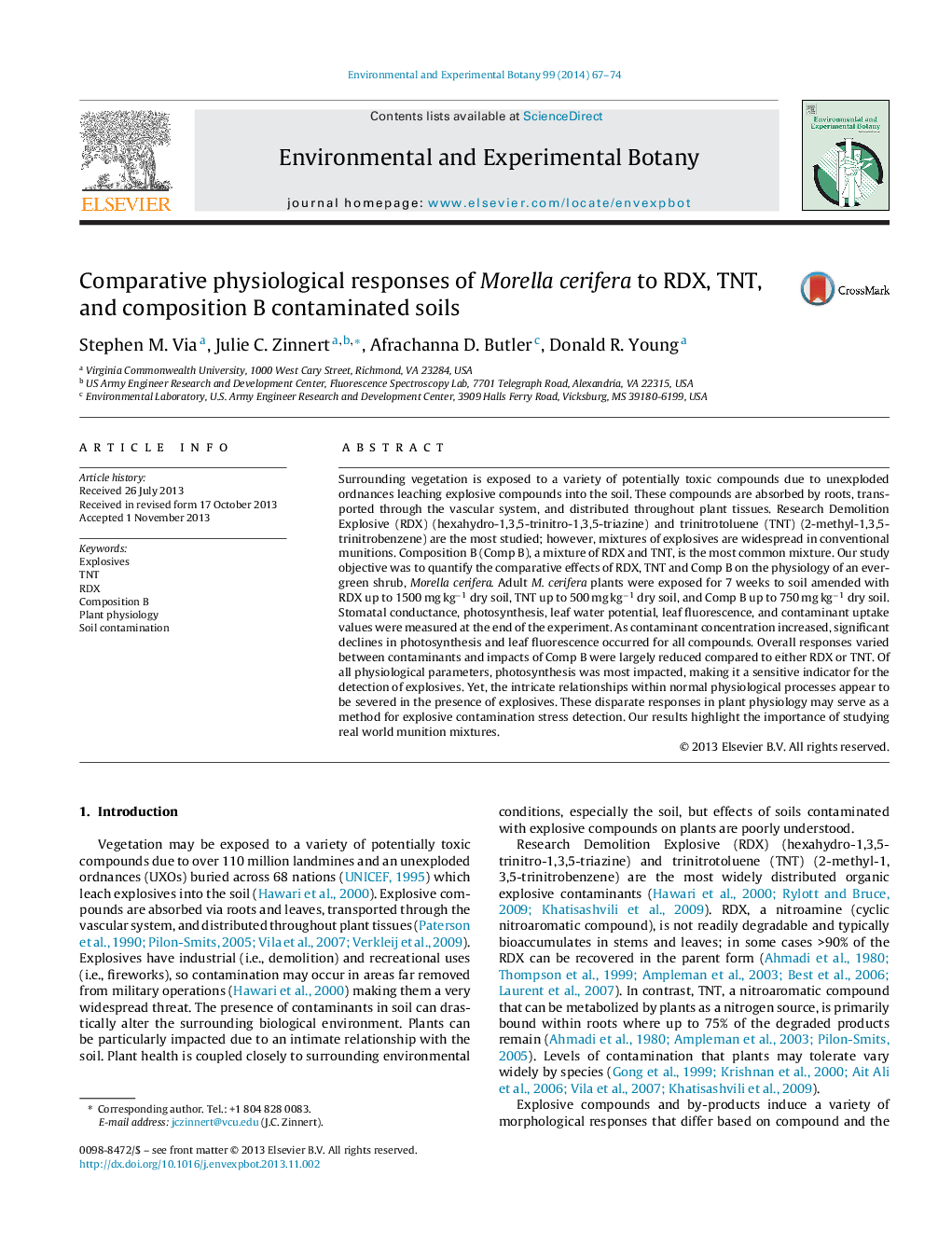| Article ID | Journal | Published Year | Pages | File Type |
|---|---|---|---|---|
| 6388919 | Environmental and Experimental Botany | 2014 | 8 Pages |
Abstract
Surrounding vegetation is exposed to a variety of potentially toxic compounds due to unexploded ordnances leaching explosive compounds into the soil. These compounds are absorbed by roots, transported through the vascular system, and distributed throughout plant tissues. Research Demolition Explosive (RDX) (hexahydro-1,3,5-trinitro-1,3,5-triazine) and trinitrotoluene (TNT) (2-methyl-1,3,5-trinitrobenzene) are the most studied; however, mixtures of explosives are widespread in conventional munitions. Composition B (Comp B), a mixture of RDX and TNT, is the most common mixture. Our study objective was to quantify the comparative effects of RDX, TNT and Comp B on the physiology of an evergreen shrub, Morella cerifera. Adult M. cerifera plants were exposed for 7 weeks to soil amended with RDX up to 1500 mg kgâ1 dry soil, TNT up to 500 mg kgâ1 dry soil, and Comp B up to 750 mg kgâ1 dry soil. Stomatal conductance, photosynthesis, leaf water potential, leaf fluorescence, and contaminant uptake values were measured at the end of the experiment. As contaminant concentration increased, significant declines in photosynthesis and leaf fluorescence occurred for all compounds. Overall responses varied between contaminants and impacts of Comp B were largely reduced compared to either RDX or TNT. Of all physiological parameters, photosynthesis was most impacted, making it a sensitive indicator for the detection of explosives. Yet, the intricate relationships within normal physiological processes appear to be severed in the presence of explosives. These disparate responses in plant physiology may serve as a method for explosive contamination stress detection. Our results highlight the importance of studying real world munition mixtures.
Related Topics
Life Sciences
Agricultural and Biological Sciences
Ecology, Evolution, Behavior and Systematics
Authors
Stephen M. Via, Julie C. Zinnert, Afrachanna D. Butler, Donald R. Young,
